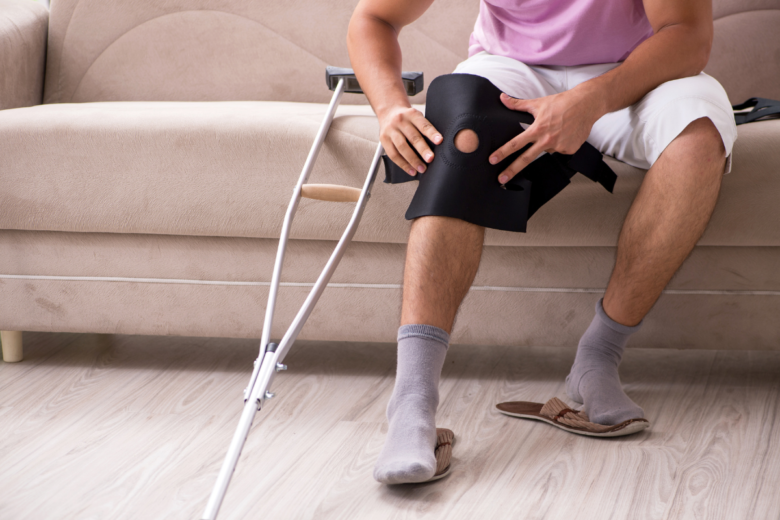Court of Appeal Upholds Liability in Complicated Causation Occupiers’ Liability Case
The Court of Appeal recently upheld the trial finding that Ontario Place was liable for the respondent’s injuries as a result of the respondent traversing a wet grassy hill that was a hazard. Causation was complicated, with the appellant arguing there was a break in the chain of causation due to the respondent’s actions. At trial, liability was apportioned 75% to Ontario Place and 25% to the respondent. In addition to the general damages and past income loss, the lower court awarded $100,000 for loss of competitive advantage because the knee injury, healthy at the time of trial, would likely require further surgery. The damages were upheld on appeal.
Background
The respondent was 21 years old at the time of the incident in July 2016 and had attended a concert at Ontario Place in Toronto. When he was leaving the concert with friends, he attempted to cross a pedestrian bridge over Lake Shore Boulevard to access a nearby transit station, but the bridge was closed. Instead, he followed a friend down a grassy hill beside the bridge. The hill was wet due to heavy rain earlier in the day. There were no warning signs posted. The respondent had consumed alcohol and was wearing flip-flops. The trial judge found the respondent jumped near the bottom of the hill and landed awkwardly, injuring his knee, which required surgery to repair. Ontario Place was found liable for the respondent’s injuries under section 3 of the Occupiers’ Liability Act, RSO 1990 c O2 (Act).
Analysis
The causation analysis focused on the “but for” test. The lower court found that the respondent was injured as a result of jumping at the bottom of the hill, which the appellant argued was the cause of the injury, not a slip and fall on a wet hill, and that the jump represented a break in the chain of causation, as the jump would have led to injury regardless of the condition of the wet grass and steep hill. The Court of Appeal noted that the “issue of causation is a factual finding, which should not be interfered with absent palpable and overriding error.” The trial judge found that “Ontario Place’s negligent acts set off a ‘train of events’ that placed the respondent at the bottom of a wet, hazardous, slippery hill – a hazard known to Ontario Place and which could have been easily prevented,’” which the Court of Appeal found no error with.
Further, Ontario Place argued that occupiers are not required to protect against every possible danger. The standard is not perfection. Wet grass caused by rainfall is not an unusual danger. However, the trial judge found that by “blocking the pedestrian bridge and making no reasonable effort from preventing the people in the crowd, a number of whom had been drinking alcohol, from going onto that wet hazardous hill, Ontario Place failed in its duty to take care that persons were reasonably safe while on its premises.” The Court of Appeal noted that the trial judge did not find Ontario Place had an “obligation to prevent patrons from entering onto all patches of wet grass,” and “pinpointed” only the “failure to place barriers” or “warn people” to “prevent people from going down the slippery hill.” The trial judge considered what would have been reasonable in the circumstances, which is precisely what section 3 of the Act directs, and therefore there was no error.
Liability was apportioned by the lower court because it found the respondent was negligent for jumping when he got near the bottom of the hill. “But for” causation requires that a defendant’s negligence be a necessary cause of the injury, not the sole cause. Ontario Place was liable for the respondent’s injuries as a result of blocking the bridge and failing to prevent the crowd from accessing the wet, slippery hill. The Court of Appeal found nothing inconsistent with these findings: there were two negligent causes of the respondent’s injuries. As there was no demonstrable error in the trial judge’s findings on apportionment, there was no basis for appellate interference.
Loss of Competitive Advantage
The Court of Appeal upheld loss of competitive advantage damages noting that “a plaintiff is entitled to damages for loss of competitive advantage if they can prove a substantial risk of loss of income in the future,” and that an “appellate court cannot intervene simply because it would have come to a different conclusion or because the appellant disagrees with the award.” The respondent’s treating orthopaedic surgeon testified, and was the only medical expert called at trial. His evidence was relied on by both parties. The trial judge was “dealing with probabilities and not certainties,” and from the evidence, there was a “real possibility that the respondent may consequently require further surgery,” which would have an impact on his ability to earn an income, especially in physically demanding work. The Court of Appeal found a “sufficient evidentiary basis for the trial judge’s conclusion.”
Conclusion
This is an important premises liability win for plaintiffs with a difficult set of facts and complicated causation. The loss of competitive advantage award acknowledged that a stable injury at the time of trial was likely to result in future complications that would interfere with employment.













